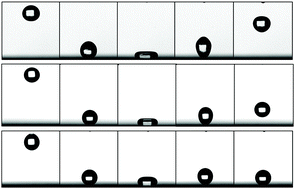Viscous bouncing†
Abstract
Repellent materials are known for their ability to make impacting water recoil and takeoff, which keeps them dry after rain. Here we show that the ability of drops to bounce can be extended by two orders of magnitude, in terms of the liquid viscosity. We measure and model two main characteristics of these viscous rebounds, namely the contact time of the drops and the elasticity of the collision, which allows us to understand how and why viscous liquids can be repelled by hydrophobic solids.



 Please wait while we load your content...
Please wait while we load your content...